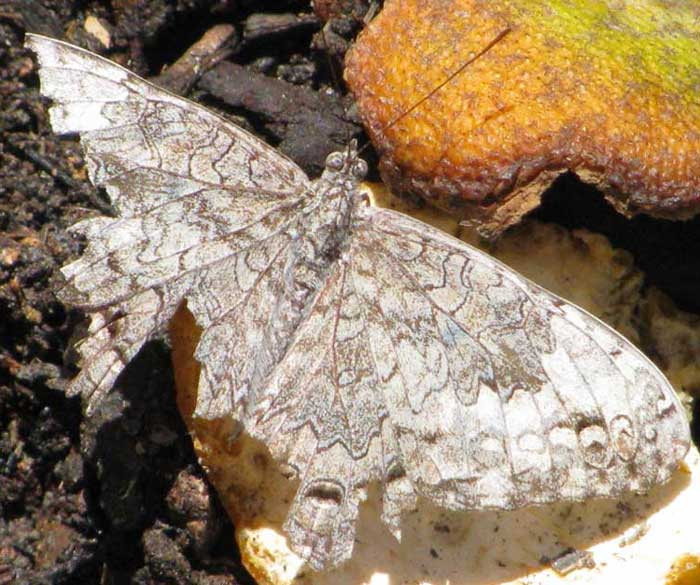Excerpts from Jim Conrad's
Naturalist Newsletter

from the February 13, 2011 Newsletter issued from Hacienda Chichen Resort beside Chichén Itzá Ruins, central Yucatán, MÉXICO; limestone bedrock, elevation ~39m (~128ft), ~N20.676°, ~W88.569°
YUCATÁN CRACKER
We have lots of "cracker" butterflies here -- called crackers because the males emit rapid-fire cracking sounds as they flit about their courting territories. The sound is like a wooden toothpick snapping, just crisper and louder.
Until now I've been thinking that I was only seeing Guatemala Crackers, Hamadryas guatemalena, one of which is shown on our Yucatán Butterfly ID Page.
But one day this week an old, faded, bird-ravaged cracker showed up on my compost heap looking a bit different. Mainly, he was far paler than typical Guatemalans, plus there was something else I couldn't put my finger on. I got the picture shown above.
Poor butterfly! With such tattered wings it was hard to imagine he could fly well, but in fact his flying didn't seem a bit hindered. Naturally I shipped the picture off to Bea in snowbound Ontario, who has been suffering butterfly-identifying withdrawal pains ever since our dry season began and I stopped seeing new species.
Bea reports that this is a new species for us, the Yucatán Cracker, HAMADRYAS JULITTA. The most obvious difference between this and the Guatemalan Cracker is that the "eyes" on the Guatemalan's hindwings are round while those of the Yucatán are "half closed."
About 20 cracker butterfly species are recognized. Each species has a certain height he likes to perch at on tree trunks, perching higher when night approaches. They prefer to perch on the sunny side of trunks unless it's a hot day, and all species perch with theirs head down. Perching males often aggressively or maybe playfully fly towards other butterflies.